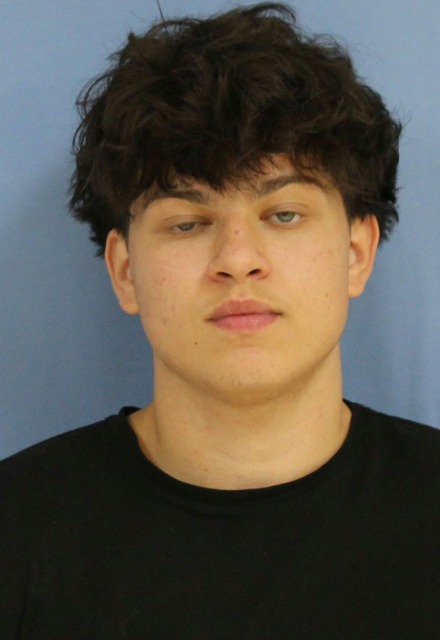Attorney General Merrick B. Garland today announces Department of Justice effort to reduce violet crimes
Published 4:42 pm Wednesday, May 26, 2021
|
Getting your Trinity Audio player ready...
|
WASHINGTON – Attorney General Merrick B. Garland today announced a new Department of Justice effort to help protect our communities from the recent increase in major violent crimes.
“Today, we renew our commitment to reducing violent crime and building strong communities where all Americans are safe,” said Attorney General Garland. “The Deputy Attorney General is issuing a comprehensive strategy to deploy our federal resources in the most effective way, disrupting the most dangerous threats and supporting the ground-level efforts of local law enforcement. In this endeavor, we will engage our communities as critical partners. And through our grantmaking, we will support programming at all stages – from the earliest violence interruption strategies to post-conviction reentry services.”
The strategy announced today is three-pronged. First, it establishes a set of four fundamental principles to be applied Department-wide to guide violent crime reduction:
- Build trust and earn legitimacy. Meaningful law enforcement engagement with, and accountability to, the community are essential underpinnings of any effective strategy to address violent crime, as well as important ends in themselves. Accordingly, building trust and earning legitimacy within our communities is the foundation on which the strategy is built.
- Invest in prevention and intervention programs. Violent crime is not a problem that can be solved by law enforcement alone. Accordingly, the Department must invest in community-based violence prevention and intervention programs that work to keep violence from happening before it occurs.
- Target enforcement efforts and priorities. The Department is most effective when it focuses its limited enforcement resources on identifying, investigating, and prosecuting the most significant drivers of gun violence and other violent crime.
- Measure results. Because the fundamental goal of this work is to reduce the level of violence in our communities, not to increase the number of arrests or prosecutions as if they were ends in themselves—we must measure the results of our efforts on these grounds.
Trending
The whole-of-Department approach means that these four fundamental principles will guide not only the Department’s 94 U.S. Attorneys’ offices, but also its law enforcement components (the Bureau of Alcohol, Tobacco, Firearms, and Explosives (ATF), the Drug Enforcement Administration (DEA), the Federal Bureau of Investigation (FBI), and the United States Marshals Service (USMS)), its grant-making components (the Office of Justice Programs (OJP), the Office of Community Oriented Policing Services (COPS), and the Office of Victims of Crime (OVC)), and litigating divisions, such as the Criminal Division.
Second, the strategy enhances the Project Safe Neighborhoods (PSN) program by directing all U.S. Attorneys across the country to update their PSN programs to be aligned with the Department’s guiding principles to improve community engagement, support proven community-violence intervention programs, develop strategic enforcement plans in coordination with state, local, and Tribal law enforcement partners as well as community groups, and measure the effectiveness of these collective efforts to reduce violence. By drawing on lessons learned from research and experience over the past two decades, the Department will help ensure that PSN remains the leading initiative bringing together law enforcement partners at all levels and a broad array of community stakeholders to develop comprehensive solutions to the more pressing violent crime problems in our communities.
Third, the strategy directs each U.S. Attorney’s Office to work with its state, local, federal, Tribal, and community partners to establish an immediate plan to address spikes in violent crime that are typically seen during the summer.
The Department recognizes that there is no one-size-fits-all solution and that the needs of each jurisdiction will vary based on the nature of violent crimes and the ability of local criminal justice systems to respond. Thus, the Department has committed to providing the following additional support where it is needed and appropriate:
- The FBI will make available cutting-edge analytical resources to support state and local law enforcement efforts to identify the most violent offenders and most dangerous criminal organizations in communities. The FBI will then deploy agents to assist with enforcement operations targeting these entities.
- Where feasible, the ATF will embed with local homicide units and expand the availability of its NIBIN Correlation Center, which matches ballistics from crime scenes to other ballistic evidence nationwide.
- The DEA will focus its efforts, in coordination with state, local and Tribal law enforcement, to disrupt the activities of the most violent drug trafficking gangs and egregious drug-trafficking organizations operating in the highest-crime areas.
- The United States Marshals Service, in coordination with state and local authorities, will conduct fugitive sweeps throughout the country focused on individuals subject to state or local warrants for homicide, aggravated assault with a firearm, aggravated robbery, robbery with a firearm, rape or aggravated sexual assault.
- The Department’s grantmaking components will highlight funding opportunities for community programs focused on reducing gun violence and other violent crime, share information about effective community-violence intervention programs, and provide training and technical assistance to support the violent crime reduction work of state, local, tribal and community partners.
To learn more, see the Deputy Attorney General’s detailed guidance to federal prosecutors, law enforcement agencies, and other components across the Department of Justice. A Fact Sheet on 2021 Grant Opportunities and Other Resources to Support Violent Crime Reduction can be found here.






